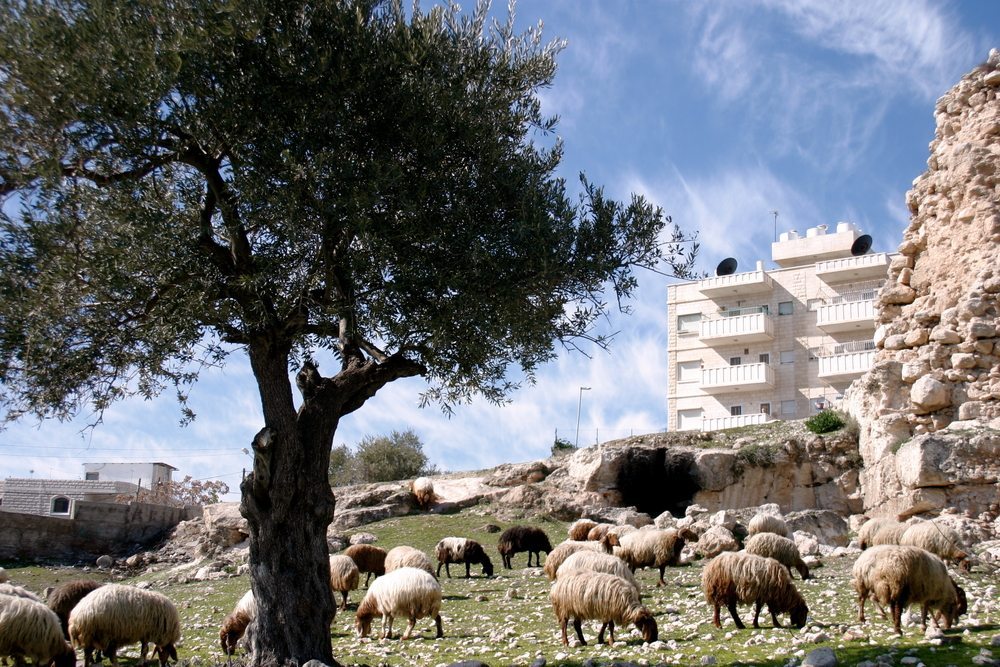It might seem surprising but Jesus probably only came to Jerusalem a handful of times during his short life. He spent the majority of his life in the Lower Galilee, close to his hometown of Nazareth. Traveling to Jerusalem for the pilgrimage festivals was not something that everyone was able to do. The journey was long and sometimes dangerous, and temporary accommodations in Jerusalem were expensive.
According to the Gospel of John, Jesus came to Jerusalem a handful of times; the Synoptic Gospels (Matthew, Mark and Luke) say it was only for the Jewish pilgrimage festival of Passover (approximately in the year 30 CE) that he arrived. Given that Jesus was a stranger to Jerusalem, he did not have many social contacts within the city itself. This explains his decision to reside in the “village of Mary and her sister Martha” (John 11:1), the suburb of Bethany on the backside of the Mount of Olives.
The word Bethany likely means “the house of the poor” in Aramaic (בית עניא), a name which underscores the humble conditions in which Jesus lived during his final week. Today, Bethany is known as el-Azariya, which means “the place of Lazarus” in Arabic, named after the brother of Mary and Martha, Lazarus, who Jesus raised from the dead in John 11. The village contains several churches, but the most famous site to visit is the tomb of Lazarus. The common burial practice for Jews in the period of the Bible was to place the body of the deceased on a stone couch within a rock-cut cave tomb for approximately one year. At the end of the year, the flesh was decomposed and the skeleton would be removed from the cave. There were two ways of disposing of the bones: either they were gathered and placed in an ossuary (personal bone box) or simply placed in a charnel house (communal grave). It is interesting that John 11:38 mentions the physical appearance of the tomb: “it was a cave and a stone was lying against it”. Even more interesting is the Greek word used here for a little cave or grotto: σπήλαιον (spelaion), which is the diminutive of the more common term for cave σπέος (speos). This is not a very common word in the New Testament. The only other place where it appears in the Gospels is in the well-known phrase uttered by Jesus during the cleansing of the Temple: “My house shall be called a house of prayer but you are making it a den of thieves” (Matthew 21:13), quoting Isaiah 56:7 and Jeremiah 7:11. The word translated as “den” is also spelaion. So a literal translation of Matthew 21:13 would read “cave of robbers” but the King James Version’s phrase “den of thieves” is so famous that most translators leave it alone. Is there something significant about the use of spelaion in these two passages? What are we to make of the linguistic connection between these two scenes: the raising of Lazarus and the cleansing of the Temple? In both cases Jesus is bringing a new breath of life to a place that has become broken. The term spelaion is meant to evoke death, both the literal death of Lazarus and the figurative death in the Temple.






